96 companies have been found for you
-
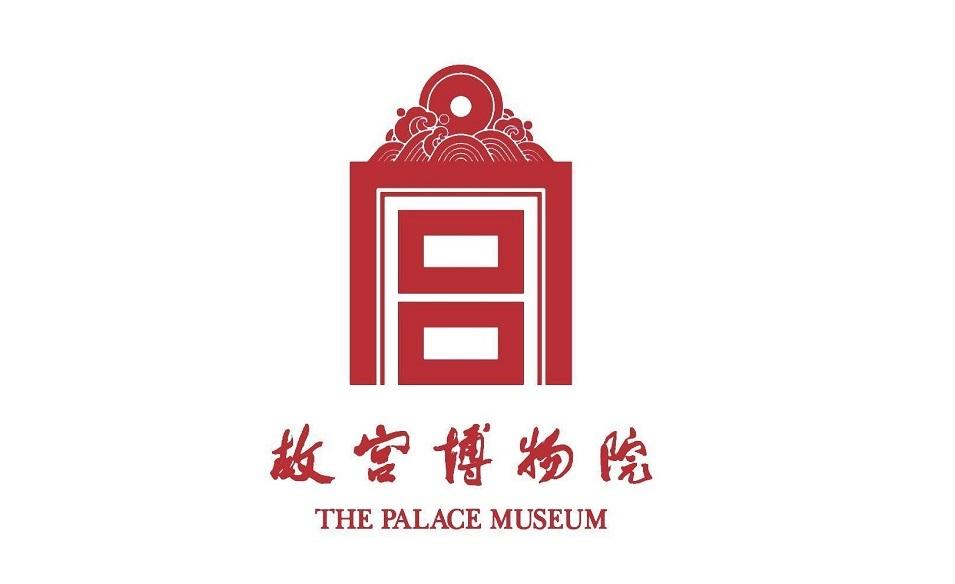
THE PALACE MUSEUMMPT-EXPO
Member Chinese Museums Association MPRFounded on October 10,1925, the The Palace Museum is the largest comprehensive museum in China, built on the imperial palaces of the Ming and Qing dynasties (the Forbidden City) , integrating architecture, collections and the rich history and culture of the palace. In 1961, it was announced by the State Council as the first batch of national key cultural relics protection units, and in 1987 it was added to the World Heritage List by the United Nations Educational, Scientific and Cultural Organization. The The Palace Museum is not only the conservation and management organization of the Ming and Qing Imperial Palace (the Forbidden City) , but also the collection, research and Exhibition Organization of Ancient Chinese cultural and artistic works based on the imperial relics of the Ming and Qing dynasties. The The Palace Museum has three major cultural resources: the 230,000 square meter ancient palace complex, which is also the world's largest wood construction complex; and the courtyard collection of cultural relics system, covering ancient and modern, quality, rich in variety. The total amount of the existing collection has reached more than 1.86 million pieces (sets) , with the Ming and Qing Court collection of cultural relics, ancient building collection, book collection. The collection is divided into 25 major categories, including a collection of more than 8,000 pieces (sets) , can be called a treasure house of art; third, the annual reception of more than 16 million people, is the first batch of national 5A class tourist attractions.

-
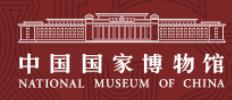
National Museum Of ChinaMPT-EXPO
Member Chinese Museums Association MPROn behalf of the state, the National Museum of China is the highest historical and cultural institution that preserves the collective memory and outstanding cultural genes of the Chinese nation, and collects representative material evidence of Chinese culture. It is also the highest historical, cultural and artistic hall of the state that reflects the fine traditional Chinese culture, revolutionary culture and advanced socialist culture. The expo booth will continue to take the architectural image of the expo as the main image of the booth, to create three areas of the living area scenic area, thematic display area and interactive experience area, to present the new fashion of cultural life for the audience. Scenic area is mainly makes the life the life field scene space, will be wen gen products into the sitting room, study, bedroom, such as contemporary household life, bring the audience closer cultural experience, truly live up to "cultural relics", all aspects into the public life and clothing live line, make the public feel wen gen product story behind the transfer of Chinese culture and cultural relics. The special display area is a series of derivative products with the theme of cultural relics display, as well as some new products authorized by IP. On the wall of the special display area, the new situation of guibo cultural resources, guibo cultural and creative industry development and the Cultural and creative China project will be introduced in the form of pictures and texts. Meanwhile, the cross-border cooperation between Guibo and high-quality social resources such as KFC and L 'Oreal will be displayed for the first time. The interactive experience area enhances the interactive experience of the audience through two-dimensional code, PAD and other forms, and enables the public to get to know the museum and its culture and innovation through new forms.

-

Tianyu Culture Group Co. , Ltd.MPT-EXPO
Member Chinese Museums Association MPRTianyu Culture Group, as the first full-range museum service provider in China, delivers its two major service systems to museum customers: "exhibition display" and "open operation management".Our professional services are fundamental to the high-quality development of museums in China. As we have always been committed to applying the research results of museums to serve various functions of society, our target is to develop and effectively utilize the resources of the culture-museum sector for the best interests of the public.
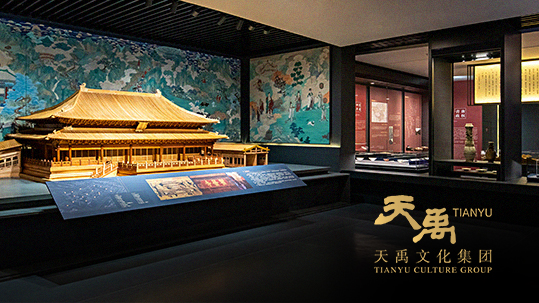
-

Anhui Museum MPT-EXPO
Member Chinese Museums Association MPRAnhui Museum was founded on November 14, 1956. Its Chinese name was renamed Anhui Museum on December 28, 2010. On September 17, 1958, Chairman Mao Zedong made an inspection of Anhui Museum and instructed that the main cities of a province should have such a museum and it was important to let people know their own history and power of creation. His instruction not only praised Anhui Museum and the cultural relics conservation of Anhui Province but also pointed the development direction of museums in New China. Zhou Enlai, Liu Shaoqi, Zhu De, Deng Xiaoping, Li Xiannian, Ye Jianying, Peng Dehuai, Chen Yi and other former leaders of the CPC and the PRC successively visited Anhui museum and Chen Yi also gave his superscription of the museum name to Anhui Museum. Anhui Museum now has two sites. The old one is located in No. 268, Anqing Road, Hefei. The exhibition building imitated Soviet architecture style and was listed as the major sites to be protected at the national level in 2013. The basic exhibitions in the old site are Anhui Revolution History Exhibition, Anhui Paleontological Fossils Exhibition and Anhui Nobel Persons Exhibition. The new site is located in No. 87, Huaining Road, Hefei. The style of exhibition building is typical of Huizhou architecture with features of five directions connected and raining water from four directions flowing into the central hall of yard. On September 29, 2011, the new site was completed and opened to the public, with one basic exhibition-Anhui Civilization History Exhibition and four special exhibitions-Huizhou Ancient Architecture, Four Treasures of the Study in Anhui, Anhui Treasures Exhibition and Ouhaonian’s Painting Exhibition. The two sites also hold special exhibitions every year to fulfill cultural needs of different visitors. The Anhui Museum now has a collection of almost 220,000 cultural relics including many distinctive categories, such as bronze ware of Shang and Zhou Dynasty, stone relief of Han Dynasty, ancient China, gold and silver ware of Song and Yuan Dynasty, four treasures of the study, calligraphy and paintings of Ming and Qing Dynasty, carvings of Huizhou, ancient books, contract documents, modern cultural relics and Pan Yuliang’s works, etc. Anhui Museum has strong technological strength in mounting and repair ancient and old calligraphy and paintings, restoring bronze ware, inscription conservation and rubbing making. We also has technological strength in conservation of lacquers and wood artifacts, conservation of paintings and preventive protection of cultural relics. Since the establishment of Anhui Museum, it regards cultural relics as foundation, exhibitions as platform, historic relics conservation and scientific research as driving force, publicity and education as safeguard. Anhui Museum has ranked among the national first-class museums and was awarded as national patriotism education site, national key conservation unit of ancient books, national technology education site etc. Huizhou Ancient Architecture, Anhui History Culture Exhibition and Huizhou Traditional Culture Exhibition was honored as The 7th , 10th and 13th Top Ten Excellent Exhibitions of National Museums. Now, Anhui Museum is not only the place of cultural relics collection, conservation and exhibition, but also develop various functions of modern museum. Thousands of cultural creativity products make it possible for the public to bring museum home. Seminars and lectures held by Anhui Museum provide opportunities for the visitors to understand museum culture. Visitors can enjoy the collections of Anhui Museum through official website, App, Weibo account and Weixin account.
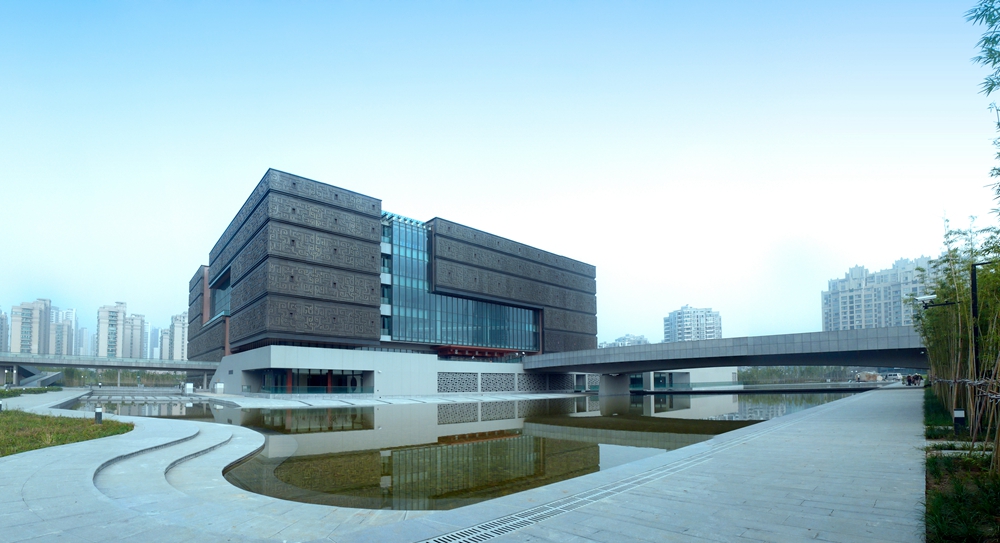
-

BEIJINNGTSINGSHANGARCHITECTURAL DECORATION ENGINEERING CO.LTDMPT-EXPO
Member Chinese Museums Association MPR
-

Hebei MuseumMPT-EXPO
Member Chinese Museums Association MPRThe predecessor of Hebei Museum was the Museum of Hebei Province , founded in 1953, located in the Cultural Square between Zhongshan Road and Fanxi Road. As an iconi c culture landscape of Shijiazhuang, Hebei Museum, with the total building area of 53,128 square meters, consists of two connective parts, the northern one founded in 1968 and the southern completed in 2013. With the advantage of exquisite cultural relics resources, Hebei Museum launched 9 permanent exhibitions, such as The Stone Age of Hebei, The Civilization Of Shang Dynasty in Hebei, The Story of State Yan and Zhao, Mighty Ancient Zhongshan State, Treasures of Han Dynasty-The Han Tombs in Mancheng County, Quyang Stone Carvings, The Fresco of The Northern Dynasties, Selected Porcelains Made in Well-Known Kilns and The Anti-Japanese War: Heroes in Hebei. By the means of more than 5000 exquisite cultural relics and modernized equipment used in the display, Hebei Museum records the human history around two million years ago and come to present. In addition to the basic display, Hebei Museum also organizes temporary exhibitions each year, focused on contemporary art, hot-button issues, international cultural exchanges and other aspects, which greatly enriches people's spiritual and cultural life. For decades, Hebei Museum makes a positive construction in collection and research of cultural relics, exhibitions, publicity and education, international communication and other aspects. Hebei Museum won the title of National Civilized Units in 2015 and Most Innovative Museum in 2018. With its rich cultural deposits, modernized exhibitions, beautiful environment, Hebei Museum extends warm welcome to the visitors from all over the world. For more than 60 years, Hebei Museum makes a positive construction in collection and research of cultural relics, exhibitions, publicity and education, international communication and other aspects. Hebei Museum won the title of National Civilized Units in 2015 and Most Innovative Museum in 2018. With its rich cultural deposits, modernized exhibitions, beautiful environment, Hebei Museum extends warm welcome to the visitors from all over the world.

-

ePaiLive
Member Chinese Museums Association MPR -

Hong bo network
Member Chinese Museums Association MPR -
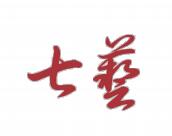
Beijing Qiyi Wenbo Culture Co. Ltd.
Member Chinese Museums Association MPR -

Beijing QianLiJu Exhibition co., LTD
Member Chinese Museums Association MPRBeijing Qianliju Exhibition Co. , Ltd. was established in 2004 with a registered capital of 51 million. It is a national high-tech enterprise with its headquarters in Beijing, is a professional museum, Science and Technology Museum, Urban Planning Museum, Commercial Space, hotels and large-scale exhibition environment and space builder. The company has the first-class qualification of the building decoration project of the Ministry of Housing, the first-class qualification of the building decoration project of the Ministry of Housing, the first-class qualification of the exhibition design of the Museum of the China Museum Association, the first-class qualification of the construction, the first-class qualification of the integration of the exhibition design and construction of the exhibition project of the China Exhibition Hall Association. The company adopts the Partnership Operation Mode of "platform + super individual" , integrating experts in various sectors of the industry, at the same time, we have established close project cooperation with many leading think tanks, design institutes and suppliers in the whole industry chain in China, as well as in Britain and the United States, to provide customers with planning, design, construction, operation and maintenance, upgrade in one of the high-quality environment and space construction services.

-
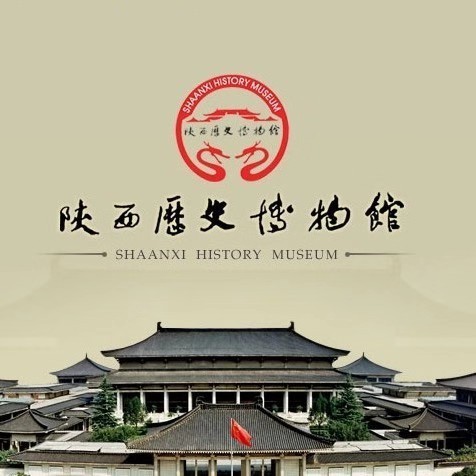
Shaanxi History MuseumMPT-EXPO
Member Chinese Museums Association MPRShaanxi is the center of Chinese ancient culture, and Xi'an is one of the four ancient capitals in the world. The hard footprints of human evolution and development over more than one million years flash here, and the essence of traditional Chinese culture has been condensed and carried forward here for thousands of years, the "Silk Road" connecting Eurasia also started from here and influenced the development of world civilization. Located in Xi'an, Shaanxi Province, China's first large-scale Modern Museum, which is known as the "pearl of the ancient capital and treasure house of Huaxia" , and the first batch of state-level museums jointly built by the central government, shaanxi History Museum is not only the preserver and recorder of Shaanxi and even Chinese history and culture, but also a carrier of Chinese ancient civilization and an extension of Chinese traditional culture. Its mission is to spread and carry forward the excellent Chinese culture. It focuses on the Zhou, Qin, Han and Tang dynasties, which make the Chinese people most proud and proud. Through these, people will feel the depth and depth of the bronze culture of the Western Zhou Dynasty when they take a cultural walk that combines browsing, appreciation, knowledge acquisition and emotional edification, the Qin and Han dynasties swept across Luhe, and the Golden Age of the Tang Dynasty.

-

The Shenyang Palace MuseumMPT-EXPO
Member Chinese Museums Association MPRLocated in the center of the Square city of Shenyang during the Ming and Qing Dynasties, Shenyang Imperial Palace was first built in 1625, covering an area of 60,000 square meters. There are 114 qing dynasty buildings, totaling more than 500. It is one of the two well-preserved ancient imperial buildings in China. According to the construction time and basic pattern, the shenyang Imperial Palace can be divided into east, middle and west three roads. The east Road mainly includes the Great Political Hall and the Ten Kings Pavilion built at the beginning of Nurhachi's move to Shenyang. The middle road is divided into several groups of buildings, such as "grand Palace palace" before the customs clearance, "xinggong Palace" added after the customs clearance, shengjing Taimiao, etc. West Road is mainly for the qianlong period to add the wen Su Pavilion, stage and other buildings. The third road building took nearly 160 years to complete, showing the architectural characteristics of different periods. The Shenyang Imperial Palace contains rich traditional Manchu culture, gathers the architectural decoration elements of the Han, Manchu, Mongolian and Tibetan ethnic groups, integrates the architectural features of the royal buildings and local folk houses, represents the highest technical and artistic achievements of the palace buildings before the entrance of the Qing Dynasty, and has high historical, artistic and scientific value. In 1961, shenyang Palace Museum was announced by The State Council as one of the first batch of national key cultural relics protection units; It was added to the World Cultural Heritage List in 2004.

-

shandong museumMPT-EXPO
Member Chinese Museums Association MPRThe Shandong Provincial Museum has a collection of more than 210,000 pieces, of which 1,385 are in the first-class collection, the collection covers 31 categories of ceramics, bronzes, oracle bone inscriptions, pottery inscriptions, seals, clay seals, seals, bamboo slips, Han dynasty stone relief, calligraphy and paintings, rare books, modern and contemporary cultural relics, as well as fossil, mineral and rock specimens, and modern animal and plant specimens reflecting the natural environment and resources, it reflects the evolution of human society and the change of natural environment in Shandong. On the basis of these complete and varied collections, and relying on first-class exhibition conditions and advanced curatorial concepts, the Shandong Provincial Museum has launched a basic display system reflecting the regional cultural characteristics of Shandong Province, including "Shandong history and Culture Exhibition" , "Confucius Culture Exhibition" , "Shandong Buddhism Statue Art Exhibition" , "Han Dynasty Portrait Art Exhibition" , "the treasure of the king of Lu -- Foshan Ming Chu Tan Unearthed Cultural Relics Exhibition" , "the collection of calligraphy and Painting Exhibition" , "Shandong Hall of fame" , "archaeological Shandong" , "African Wildlife Migration Exhibition" and other nine exhibitions 15 exhibition halls. We have also organized more than 200 special exhibitions and temporary exhibitions on cultural relics by cultural museums and cultural and arts institutions at home and abroad. We have made great efforts to innovate the display of art and ways of expression to meet the cultural needs of the people at different levels.
-

Introduction of Beijing Auto MuseumMPT-EXPO
Member Chinese Museums Association MPREstablished and opened to the public in 2011, Beijing Auto Museum is one of national non-profit museum themed on automobile. Combining the functions of museum, exhibition hall, and science & technology museum, it covers a building area of about 50,000 square meters. From bird’s-eye view, its architectural form resembles a bright "eye ", meaning "look around the world and face the future ". Beijing Auto Museum sets up three exhibition halls and one exhibition area with the “science-technology-society” topic selection method. It aims to break down the boundaries between country and brand, exhibit the history of the world's auto development in a hundred years, as well as the beginning, development and expansion of China's auto industry, and reveals the great effect of automobile industry on human civilization and social development. Beijing Auto Museum doesn’t follow the conventional way of display, instead it adopts a variety of interactive methods and makes it possible for visitors to see, hear, touch, interact and experience. It vividly presents the endless charm arising from the combination of technology and culture, technology and art, and technology and life. At the same time, from the perspective of the visitors, the Auto Museum has arranged a number of special theme activities with attractive and educational features, including “ International Museum Day Theme Exhibition”, “Lei Feng, Story of An Auto Soldier” Educational Activities, Popular Science Experience Camp for Winter and Summer Vocations, “Story of Military Vehicles”, “Car@City@Man”Series Show etc. Which transform the historical value, scientific and technological value and cultural value of the museum into social values, and realizes the dual experience of visiting a cultural museum and a science museum in one tour. Beijing Auto Museum, adhering to the concept of "open the door and integrate into society ", actively explores the integration of science, culture and tourism, takes up the responsibility for China's automobile culture research and popular science education as a pathfinder, promotes the harmony and development of "man-car-society " and strives to develop into a demonstration platform for standardization of museum services, a platform for public services, a platform for world automobile culture exchange, a platform for science popularization, a platform for the integrated development of popular science, culture exchanges and tourism. Taking history as a mirror, we serve the present, look to the future, promote the automobile culture exchange between country and country, city and city, car and car, people and people, provide opportunities for people all over the world to share the achievements of automobile technology, technique and art together. Beijing Auto Museum has been given many honors and titles, such as National Service Standardization Demonstration Unit , National Second-Class Museum, National AAAA Tourist Attractions , National Excellent Popular Science Education Base, China Automobile Culture Promotion Base, Beijing-Tianjin-Hebei New Energy Automobile Science Popularization and Experience Base, Chinese Automobile Designer's Home, Beijing Patriotic Education Base, Beijing Citizen Lifelong Learning Demonstration Base, Beijing Elementary and Middle School Students Education Base and Beijing Ecological Environment Education Base. In 2018, the museum won the honorary title of "Advanced Organization in the National Cultural Relics System". Join us at Beijing Auto Museum and wish more people can enjoy the fruits of automobile civilization.

-

The Museum of Guangxi Zhuang Autonomous RegionMPT-EXPO
Member Chinese Museums Association MPRThe Guangxi Zhuang Autonomous Region is a provincial Comprehensive Museum of history and art, a National First Class Museum, a unit for the protection of key ancient books in Guangxi and a center for the restoration of ancient books. Its predecessor was established in 1934 as the Guangxi Provincial Museum. The building was built in 1978 and covers an area of about 60 mu. It is composed of the exhibition building with the characteristics of the stilt house and the National Cultural Relics Garden with strong national characteristics and customs, in Our National Museum, the Nothing in Common. It has a collection of 70,000 pieces (sets) , including 148 pieces (sets) of first-class Cultural Relics, and a collection of more than 30,000 volumes of wired-bound ancient books. The Guangxi Zhuang Autonomous Region, with its combination of inside and outside, activity and stillness, Sound of the Underground and savoury features, fully demonstrates Guangxi's historical origins and local characteristics and attracts visitors from all directions.
-
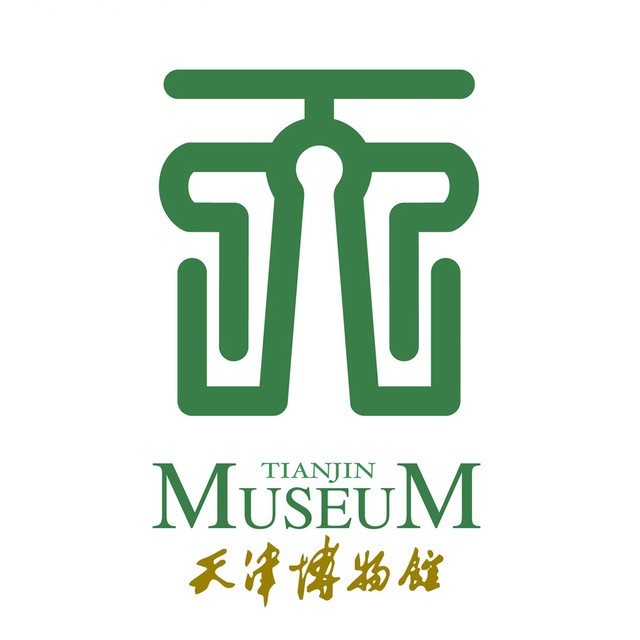
Tianjin MuseumMPT-EXPO
Member Chinese Museums Association MPRTianjin, bordering On Youyan in the north and bohai in the east, is a famous historical and cultural city where ancient and modern times blend, the combination of Chinese and Western, boats and vehicles gather, and people gather. As an early port city in China, Tianjin has been the frontier region of the collision and fusion of Chinese and Western cultures since modern times. It is also one of the cities with the earliest museums in China. 2018 has been an extraordinary year for tianjin's literary and art circles. 2018 marks both the 90th anniversary of the opening of the Northern Xinjiang Museum and the 100th anniversary of the founding of the Tianjin Museum. Over the past 100 years, adhering to the tenet of "expounding culture, carrying forward the national light, and assisting school education and social education", Tianjin wenbo has made great progress in popularizing knowledge, educating the public, and inheriting culture. Especially after the 18th National Congress of the CPC, the CPC Central Committee with Comrade Xi Jinping at its core has attached great importance to the cause of cultural and museology, and the cause of cultural and museology in China has entered a fast track of development. In recent years, with the high attention and strong support from the State Administration of Cultural Heritage, Tianjin Municipal Party Committee and Tianjin Municipal Government, Tianjin cultural and Museological undertakings have been developing continuously. The functions of cultural and museological institutions represented by Tianjin Museum have been constantly improved, and their service objects and fields have been expanded and their service means have been innovated. At present, there are nearly one hundred museums registered and officially opened in Tianjin Municipal Bureau of Cultural Heritage, covering a wide range of topics from history, art to natural science. In 2017, nearly 15 million people visited various cultural and museological institutions in Tianjin. From 2009 to now, in the selection of the national museum top ten fine exhibitions, the city museum independently planned 8 original exhibitions have won the fine award, winning award and other awards. In the future, Tianjin will further develop its cultural and cultural undertakings, constantly enhance its cultural soft power and urban influence, and better meet the people's new expectations of spiritual and cultural life.
-

Hubei Provincial MuseumMPT-EXPO
Member Chinese Museums Association MPRFounded in 1953, the Hubei Provincial Museum is the province's most important cultural relics collection and collection, exhibition and publicity and education institutions, archaeological exploration, excavation and conservation research center, is A national-level museum, central and local co-construction of one of the eight national key museums. The Hubei Provincial Museum has a collection of more than 240,000 items and nearly 1,000 national first class cultural relics. Among them, Yunyang skull fossils, Sword of Goujian, Bianzhong of Marquis Yi of Zeng and Yuan dynasty blue and white Siaitumei bottles are known as the four "treasures of the town hall" of the Hubei Provincial Museum. As an extension of the exhibition, the chime bells dance is a unique and popular dance. With a replica set of Bianzhong of Marquis Yi of Zeng and chimes as its core, the Hubei Provincial Museum combines replicas of various ancient musical instruments to bring the Splendour of ancient court song and dance to today's art scene. In December 2011, the third phase of the Hubei Provincial Museum was launched. After the completion of Phase III, the Hubei Provincial Museum Gross leasable area will reach 110,000 square meters and the exhibition area will be about 30,000 square meters, it will be a collection and storage, display and display, scientific research, technology protection, educational consultation and other functions, taking into account the functions of books and materials, Film and television projection, shopping, catering, leisure and play, etc. , the modern and comprehensive National First-class Museum with Distinctive Times Style and Jingchu culture has created a cultural window and a landmark cultural tourist attraction with distinct regional cultural characteristics in Hubei Province and Wuhan.
-

Nantong Museum MPT-EXPO
Member Chinese Museums Association MPRLocated on the coast of Hao River in the southeast of nantong ancient City, Nantong Museum was founded in 1905 by Zhang Jian, a famous patriotic industrialist and the first scholar of the late Qing Dynasty. It is the earliest public museum in China. Built the collection points in the early days of production, history, art and education department, exhibition of cultural relics and samples of the main hall there is south to north pavilion, pavilion, pavilion, the rooms have of breeding animals 罧 crane spare, birds, sill and wood, waterfowl, etc., there are late spring plants show site 堮, autumn ping, medicine, bamboo altar stone exhibition place, etc., among the trees and flowers of pavilions in the landscape dotted with large cultural relics, all with the logo of China, Japan and the west. The rich cultural atmosphere of the integration of museum and garden and the combination of Chinese and Western culture reflects Zhang Jian's unique concept of museum. Adhering to the principle of "Setting Up Zhang Jian as the current school to teach, and knowing more about birds, beasts and trees", the museum has been exhibiting basic exhibitions of nantong regional culture, natural resources, garden history, Zhang Jian's achievements, etc., and has held more than 20 temporary exhibitions every year. At the same time, I took the initiative to integrate into the society. I visited schools, military units, enterprises, communities and hospitals through science popularization exhibition and "Knowing Nantong · Loving Hometown" tour. It cooperates with the Palace Museum, The Swiss Puli Art Museum and other domestic and foreign museums, and with the Nanjing University of the Arts and other universities to seek for depth and leapfrog development. Today's museum, with its pleasant environment and quality service, reflects Zhang Jian's "indifference to busy affairs".
-

HUNAN MUSEUMMPT-EXPO
Member Chinese Museums Association MPRFounded in 1951, the Hunan Provincial Museum is located in Kaifu District, Changsha, near the Beautiful Martyrs Park. It is the largest museum of historical art in Hunan Province, it is also the first group of National first-class museums and the central and local governments to jointly build state-level key museums. The Hunan Provincial Museum has a rich collection of more than 180,000 cultural relics, especially the Mawangdui, bronzes of the Shang and Zhou Dynasties, cultural relics of Chu, ceramics of past dynasties, calligraphy and painting, and Cultural Relics of modern times. Since its establishment, the Hunan Provincial Museum has taken the protection and inheritance of outstanding historical culture as its mission, and has integrated collection, collection, research, display, education and service of cultural relics. Over the years, she has attracted thousands of visitors and become one of the most well-known museums at home and abroad. It is an important window for people to understand the development of the Lake Hunan Civilization and appreciate the mysteries of Huxiang culture.
-

Jilin Province MuseumMPT-EXPO
Member Chinese Museums Association MPRJilin Provincial Museum, formerly known as the Jilin Provincial Museum, is directly under the Jilin Provincial Cultural Department of the National First-class Museum. Founded in 1951 with the approval of the People's Government of Jilin Province; officially opened in Jilin City in 1952; moved to Changchun with the provincial government in 1954. Currently located at 1666 Wing Shun Road, Changchun, with a Gross leasable area area of 32,000 square metres, the main exhibitions are "the memory of the white mountains and the Pine Water: a historical and cultural exhibition of Jilin Province" , "a retrospect and prospect of the archaeological achievements of Jilin Province" (1997-2016) and "the Zhangboju pavilion" . Jilin Provincial Museum is a history and Art Museum, the existing collection of more than 120,000 pieces. From ancient times to modern times, the essence of the collection, rich in content. As an important part of the cultural heritage, the cultural relics collection of the Jilin Provincial Museum is composed of Chinese calligraphy and painting of the past dynasties, cultural relics of Goguryeo, Bohai Sea, Liao and Jin dynasties, and folk cultural relics, the unique cultural relics of the modern revolutionary history and Northeast Anti-japanese United Army period occupy an important position in the domestic and even international museum circles.

